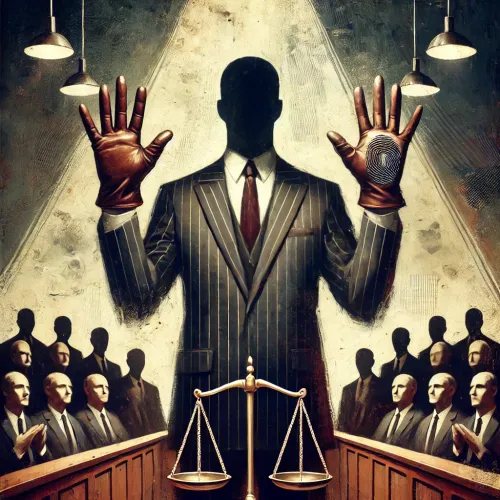The case of Georgia v. Brailsford arose from disputes following the American Revolution, a period marked by economic and political tension between states and foreign entities. The State of Georgia attempted to confiscate debts owed by its citizens to British creditors, citing state laws enacted during the Revolutionary War that voided certain financial obligations to British entities.
In this case, the plaintiff, Brailsford, a British subject, sought repayment of debts owed by a Georgia citizen, claiming that such debts were protected under the Treaty of Paris (1783), which ended the Revolutionary War. The treaty guaranteed British creditors the right to recover prewar debts, directly conflicting with Georgia’s confiscation laws. The U.S. Supreme Court was tasked with resolving the dispute between Georgia and the British creditors.
Legal Issues
The case presented two central legal questions:
- Federal Treaty Supremacy: Did the Treaty of Paris override conflicting state laws, such as Georgia's confiscation statutes?
- Role of the Jury: What was the jury’s role in determining the application of both law and fact in a legal dispute involving international treaties and state laws?
Supreme Court Proceedings
The case was argued before the Supreme Court in 1794, with Chief Justice John Jay presiding. The Court’s instructions to the jury were particularly significant, as they explicitly addressed the role of jurors in interpreting both law and fact.
In his charge to the jury, Chief Justice Jay stated:
“It is presumed, that juries are the best judges of facts; it is, on the other hand, presumed that the courts are the best judges of law. But still, both objects are lawfully within your power of decision… you have a right to take upon yourselves to judge both, and to determine the law as well as the fact in controversy.”
This statement underscored the jury’s unique authority, granting them the ability to interpret and apply the law independently of the court’s instructions. While Jay emphasized the importance of respecting judicial expertise, he affirmed that jurors retained ultimate authority over the outcome of the case.
Verdict and Outcome
In this instance, the jury ultimately found in favor of the British creditor, Brailsford. This decision effectively upheld the Treaty of Paris over Georgia’s confiscation laws, signaling the supremacy of federal treaties in resolving disputes involving international obligations. The ruling demonstrated the jury’s capacity to deliver a just outcome, even in cases involving complex legal principles and significant political implications.
Significance and Implications
Georgia v. Brailsford remains a foundational case in the discussion of jury nullification and the broader role of juries within the American legal system. Its significance lies in several key aspects:
- Acknowledgment of Jury Nullification: Chief Justice Jay’s charge explicitly recognized the jury’s power to judge both law and fact. This acknowledgment affirmed the jury’s ability to exercise independent judgment, a principle central to the concept of jury nullification.
- Balancing Judicial and Jury Authority: The case highlighted the delicate balance between judicial expertise and jury independence. While jurors were encouraged to consider judicial guidance, they were ultimately empowered to reach their own conclusions based on their conscience and understanding of justice.
- Federal Supremacy in Legal Disputes: By upholding the Treaty of Paris, the case reinforced the supremacy of federal law and treaties over conflicting state statutes. This principle was later enshrined in the Supremacy Clause of the U.S. Constitution.
Impact on Jury Nullification
Georgia v. Brailsford is often cited in contemporary debates on jury nullification as an early and clear articulation of the jury’s power to evaluate the justice of laws. The case underscores the historical view of juries as a critical check on potential abuses of legal or governmental authority.
While subsequent cases, such as Sparf & Hansen v. United States (1895), have sought to limit the explicit use of jury nullification, Brailsford remains a touchstone for those advocating for the jury’s role as a conscience of the community.
Critiques and Challenges
Despite its historical significance, Georgia v. Brailsford raises enduring questions:
- Legal Consistency: Critics argue that empowering juries to interpret laws can lead to inconsistent verdicts, undermining the principle of equal application of justice.
- Judicial Reluctance: Modern courts have largely moved away from explicitly instructing juries on their ability to nullify, as seen in cases like United States v. Dougherty (1972). This shift reflects concerns about maintaining the predictability and integrity of the legal system.
Georgia v. Brailsford (1794) stands as a seminal case in the history of jury nullification, affirming the jury’s authority to judge both the law and the facts. Chief Justice Jay’s instructions highlighted the unique role of juries as independent arbiters capable of delivering justice beyond rigid legal frameworks. While the explicit encouragement of jury nullification has diminished in modern jurisprudence, the principles established in Brailsford continue to inform discussions about the balance between legal authority and individual conscience within the American justice system.



